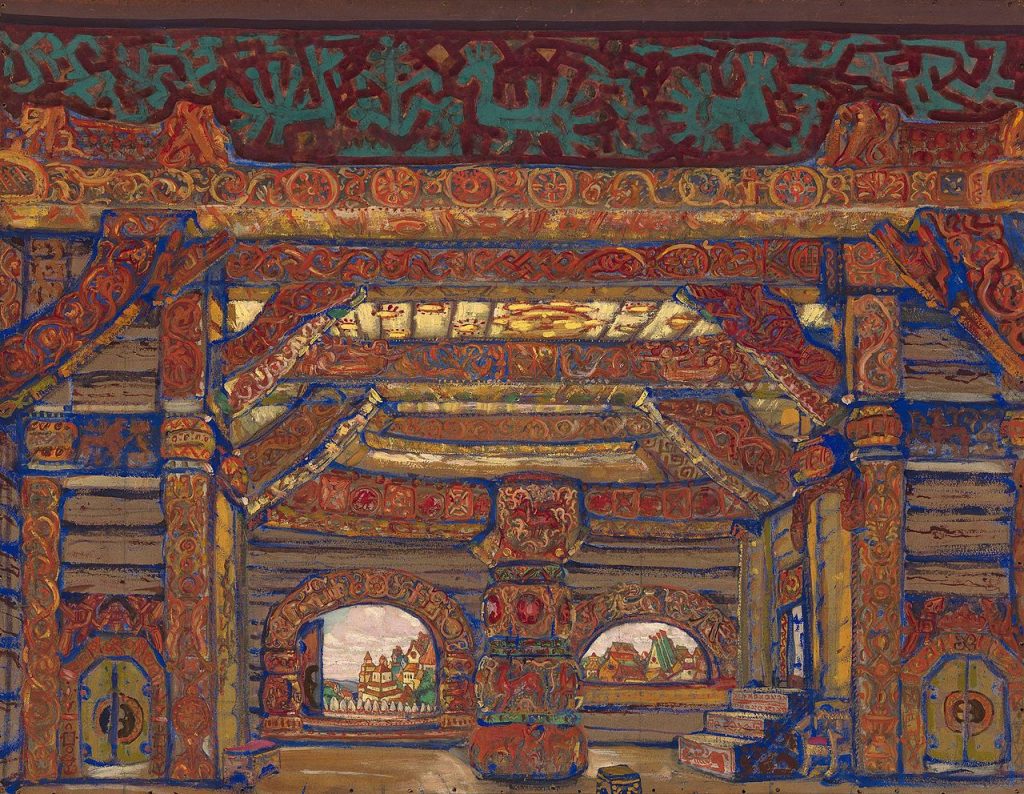A New Take on the Iconic Girl Reading a Letter by Vermeer
The recently restored Girl Reading a Letter at an Open Window by Johannes Vermeer (1632-1675) is often said to be that of a young woman reading a...
Tom Anderson 26 September 2024
Nicholas Roerich, a prominent member of the early 20th-century art world, was distinguished by his unique artistic style and profound spiritual vision. His expansive body of work encompassed various forms, including painting as well as set design. A true visionary, Roerich’s creations were a manifestation of his deep insights and philosophical inclinations. They transcend mere aesthetics to convey deeper meanings and connections.

Nicholas Roerich, St. Mercurius of Smolensk, ca. 1918, Christies.
Born in 1874 in Saint Petersburg, Russian Empire, Nicholas Roerich enjoyed a privileged upbringing–his father held a position as a notary public. He studied law at Saint Petersburg State University and then obtained formal art education at the Imperial Academy of Arts in Saint Petersburg. Roerich had a deep reverence for Russian art and history. He crossed paths with Helena Shaposhnikova in 1899, who became his wife and spiritual partner. Their shared journey commenced with explorations of their homeland shortly after the marriage.
As their family expanded, the couple along with their children traversed the globe, venturing through Europe, the United States, and the United Kingdom. Furthermore, he made India his home for a significant portion of his life, from the early 1920s until his passing in 1947. He settled in the town of Naggar, located in the Kullu Valley of Himachal Pradesh.

Nicholas Roerich, Buddha, the Conqueror from the Banners of the East series, ca. 1925, International Center of the Roerichs, Moscow, Russia.
Nicholas Roerich’s artistic journey was initially shaped by the rich tapestry of the Russian Realist tradition. As time progressed, he ventured into Symbolism and Art Nouveau, each phase contributing to his evolving distinctive style.
Around the early 1900s, his art started to adopt spiritual and philosophical themes. The resulting paintings radiated an aura of mysticism and otherworldly essence. He studied spiritual practices, deepening his own exploration, lending his creations a hypnotic expression that became characteristic of his unique oeuvre.

Nicholas Roerich, Christ in the Desert, ca. 1933, International Center of the Roerichs, Moscow, Russia.
The Himalayas have a longstanding history of spiritual and religious significance which captivated Roerich as it did many others. The profound impact of these sacred mountains on his spirituality and artistic sensibilities is evident in some of his most celebrated works. Roerich embarked on extensive journeys into the remote realms of Central Asia and the Himalayas, approaching these expeditions as profound spiritual pilgrimages. He sought the wisdom of the ancient cultures that held this region in deep reverence.
Through his art, Roerich captured the majesty of Himalayan landscapes. His depictions transcended the physical scenes, thereby reflecting his belief in the interconnectedness of all life forms and divine harmony.

Nicholas Roerich, And We See, ca. 1922, International Center of the Roerichs, Moscow, Russia.
Nicholas Roerich’s most enduring legacy lies in his resolute dedication to both peace and the safeguarding of cultural heritage. In 1935, he spearheaded the initiation of the Roerich Pact, an international treaty with the explicit purpose of shielding cultural treasures from the ravages of conflict. He believed that the cultural legacy of the world should transcend the turmoil of wars. To this end, he proposed the adoption of the distinctive Banner of Peace symbol to identify and protect significant cultural sites from destruction.
The Roerich Pact marked a rare instance in history where a collective initiative prioritized the preservation and conservation of cultural heritage above the bounds of global politics. Roerich’s commitment struck a chord globally, leading to multiple nominations for the Nobel Peace Prize and also establishing him as a prominent figure in the international peace movement.

Svetoslav Roerich (Nicholas’ son), Portrait of Nicholas Roerich in a Tibetan Robe, ca. 1933, International Center of the Roerichs, Moscow, Russia.
Nicholas Roerich’s legacy resonates powerfully through his lasting artistic contributions, unwavering commitment to cultural heritage preservation, and steadfast advocacy for peace. His tireless efforts to conserve cultural treasures left a lasting imprint on the art world and beyond.

Nicholas Roerich, The Palace of Tsar Berendey, a set design for A. Ostrovsky’s fairytale, Snegurochka, ca. 1919, Wikimedia Commons (public domain).
DailyArt Magazine needs your support. Every contribution, however big or small, is very valuable for our future. Thanks to it, we will be able to sustain and grow the Magazine. Thank you for your help!